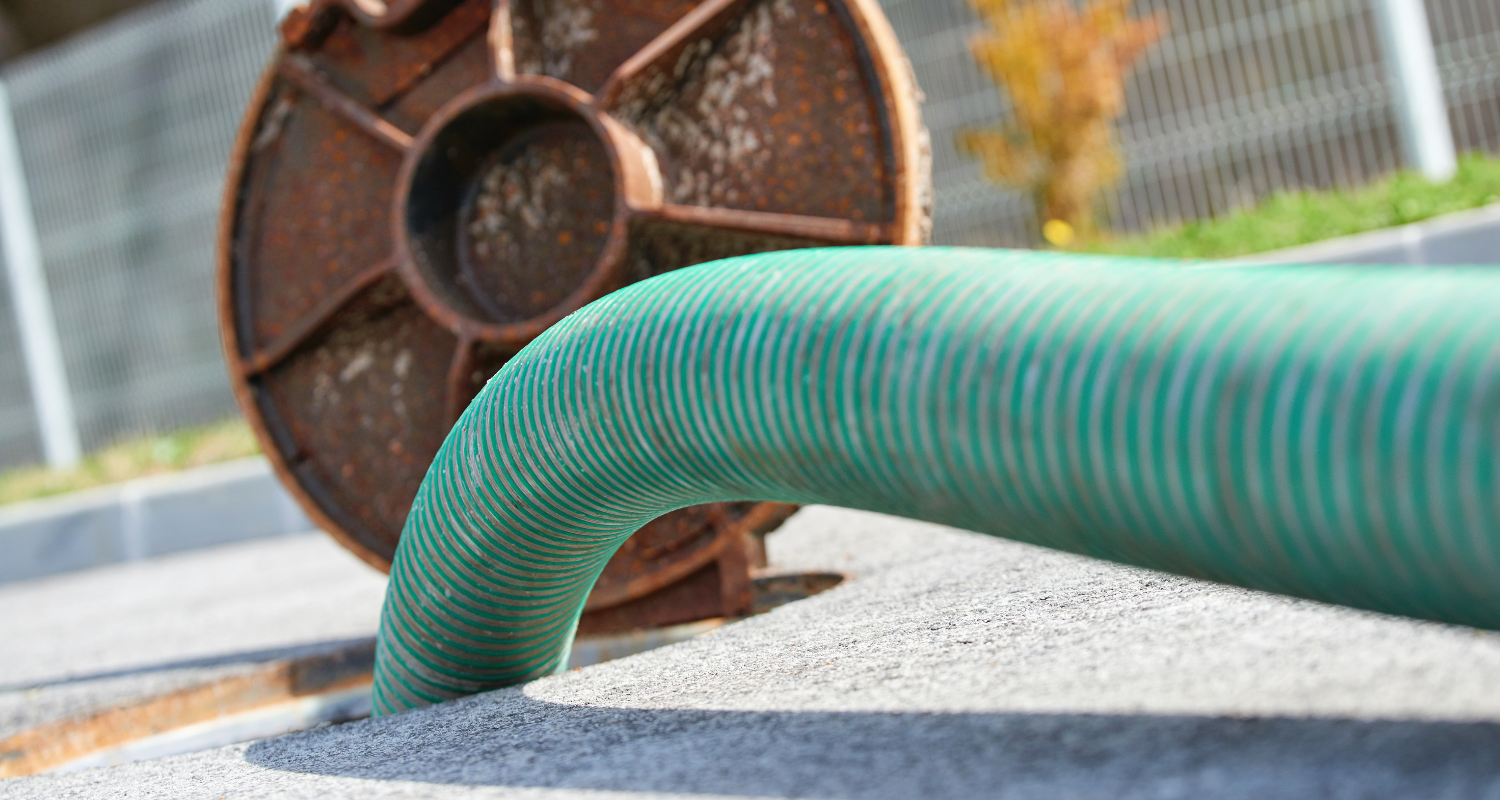
If you have a septic system, sewage and wastewater drains from your home to an underground tank where it is treated and dispersed into the ground. Microorganisms (commonly called bacteria, although this includes protozoa, fungi, and other microbes) that develop naturally in the tank, digest and break down the organic matter. To help these microorganisms keep up with the sewage in your septic tank, every few years, you’ll pay around $450 to have your tank emptied, or pumped. But if you own a home, are buying a home, or will be selling a home with a septic system, flushing out other important details can make your head swirl. How do you know when to pump, when NOT to pump, who should pump, how to reduce pumping frequency and save money? To provide you with expert information, we talked to Jeff Lyons of R&L Septic in Springfield, Illinois and top real estate agent Sandi Van Camp of Hunt Real Estate in New York. Table of contents What’s in your septic tank and how it worksWhy you need to pump septic (and how often)Different tanks (What type of tank do I have?)How much it costs to empty your tankAdditional considerations (Costs for repair and maintenance services)How to know when your tank needs to be pumpedHow to reduce pumping frequencyShould you use bacterial drain cleaners and septic solutions?What to expect from a septic tank pump serviceHow you can cut expenses on your septic pumping serviceWhen a septic tank should NOT be pumpedWhere to find a reputable septic service to pump your tankHow septic system and tank condition affect resale value As it breaks down, the sewage in your tank separates into three layers. Solids settle to the bottom in a layer called sludge. Oil and grease form the top layer, which is called scum. The layer between the sludge and scum is a liquid called effluent. Effluent is pre-treated wastewater that drains out of the tank into a shallow drainfield. Highly toxic methane gas rises to fill the space at the top of the tank. A T-shaped outlet pipe in the tank prevents solids and scum from entering the laterals, which are perforated pipes that extend away from the tank below ground. Effluent is dispersed into porous materials (such as gravel or sand) which filters it before it percolates through the soil. Soil microorganisms treat the pre-treated wastewater as it percolates through the drainage field. A sturdy layer of geothermal fabric protects the drainfield (also called a leach field or cesspool) from ground contaminants and pests. To keep your septic system in top condition, and prevent clogs that can damage laterals and cause sewage to back up into your home, you need to have your septic tank pumped every 3-5 years, or when sludge takes up more than one-third of the volume of your tank. According to Van Camp, oftentimes you won’t have issues with a septic tank if you pump every three to five years. It’s scary when a homeowner says “I haven’t pumped my system in ten years.” As sludge settles to the bottom of the tank, the holding capacity of the tank is diminished. Clogs and backups occur if sludge reaches the T-shaped outlet. In addition, a full tank may cause methane and hydrogen gases to escape into your home. As the sludge builds up, it becomes increasingly difficult for the microorganisms to break it down. Emptying the tank helps the microorganisms to catch up and keep your tank functioning properly. Microorganisms live in a perfectly balanced ecosystem (biome or colony), which can be disrupted, imbalanced, and even killed by household chemicals and inorganic materials that they can’t break down. An imbalanced ecosystem cannot properly break down sewage and your tank will overfill with sludge and scum until it clogs and overflows into your yard and your home. Factors that increase how often you should have your septic pumped: A septic system may be anaerobic (oxygen-free), relying on microorganisms that thrive without oxygen. Aerobic tanks add oxygen to the tank for oxygen-loving microorganisms. Then, there are different types of septic systems depending on the volume and frequency of use, lot size, water table, groundwater saturation, and climate. Some of the more complex septic systems that have more tanks or moving parts require more maintenance in addition to regular pumping: The following average costs are based on project estimates and homeowner feedback. We’ve pulled estimates from sources with the most recent updates. In addition, we’ve provided you with a recent real life estimate from a septic service in Phoenix in order to deliver the most accurate pricing. Updated: August 24, 2021 Methodology: HomeAdvisor tracks millions of user-submitted project estimates and correlates them with local professional estimates to deliver accurate averages. Updated: June 10, 2021 Methodology: Angi tracks millions of user-submitted project estimates and correlates them with local professional estimates to deliver accurate averages. Updated: August 26, 2020 Methodology: Thumbtack tracks project estimates from the millions of people who use its site to connect with local professionals every year, then shares those prices on its site. Updated: October 28, 2021 Source: R & L Septic of Springfield, Illinois * Lyons reports that their rates are competitive for the area and are subject to change January 1, 2022. There’s also an additional charge for travel outside the county, locating the tank, digging to the tank, adding a riser, maintenance and repairs, and inspections. In addition to pumping your tank, a septic company may recommend the following services as needed: If sewage backs up into your home, you will pay a cleaning service to remove waste and restore your home to livable conditions: Sewage in your home (cleaning service) $7 per square foot. To clean 1,500 square feet of a home would cost $10,500. Location. If you live outside your septic company’s service location, you may be charged for the technician’s gas and time to drive out to your residence. Many times, this charge is a flat fee. Pandemic inflation. Since the pandemic, supply chain issues and delayed manufacturing due to shortages in staff, closures, a shortage of shipping containers and trucks, rising fuel prices, and tariffs have inflated costs across the nation. This includes costs of materials and parts to service your septic tank as well as the cost of machinery and the cost to retain staff. According to Lyons, R & L Septic’s rates haven’t changed but will most likely go up approximately 7.7% January 1 and will still be competitive for their Midwest region. If you had your septic tank pumped prior to the pandemic, expect a higher service charge today. It’s less expensive to pump your septic regularly than it is to repair a clog in your laterals or sewage backup into your home. However, if you notice these signs, you should contact a septic service to check your tank: If you’re finding your tank needs to be emptied more frequently than every 3-5 years, you may be overtaxing the system. Here are some tips to help your system work better so you can reduce pumping frequency: Microbial drain cleaners that claim to be septic safe can actually cause an imbalance in the septic ecosystem. In particular, RidX floods the septic system with aggressive bacteria that attack and kill the beneficial microorganisms in the tank and drainfield. Septic-safe vinegar and baking soda or a drain snake will effectively clear a clog. Some manufacturers promote bacteria or microorganisms septic treatments for a healthy ecosystem in your septic. However, if you’re doing everything right, the microorganisms living in your tank won’t need help. Microorganism additions shouldn’t be used to avoid routine pumping and maintenance. This includes flushing yeast, which contains microscopic fungus that will compete with the bacteria in the tank. Adding unnecessary microorganisms to a well-balanced tank can imbalance the tank and cause issues. Too many microorganisms can deplete the oxygen in a tank and kill the ecosystem. If you have concerns about how well your septic is functioning, contact a professional septic service, who can inspect your tank and, if necessary, recommend or apply an additive from a reputable manufacturer. It will take approximately 20-30 minutes to pump your tank. A larger tank (1,000+ gallons) may take twice as long (40-60 minutes) to empty. How long it takes depends on the equipment used, how fast the technician works, and other factors (such as finding and uncovering the septic cap, inspecting and repairing any aging or malfunctioning parts). Here is what you should expect from a septic tank pump service: If your septic cap isn’t obvious, it might be buried. Your septic service might be able to find it by locating and following the sewer line. However, be prepared for them to ask for an as-built diagram, which you can get from your local county records office. If your septic is buried, the septic service may have to dig it up. This is a good time to ask them to install a septic riser, which is a pipe that extends the cap to ground level for easy access. The septic technician will measure the level of sludge (the solids) at the bottom of the tank with a tube called a sludge judge. This measurement will tell the technician if your septic should be pumped. Accumulation changes over time depending on household size and how efficiently the septic is working. Septic services maintain a record of your sludge measurements, which can alert them to issues. The technician should scrape the bottom of the tank to ensure all the solids will be removed. They will then insert a hose to pump out the solids. Although the objective is removal of the solids to maximize your tank’s capacity, liquids must be removed to get to the solids. A good septic service will clean the filter at the same time your tank is pumped and inspect the system for any required maintenance. The septic service will remove the wastewater from your property and dispose of it in a sewage treatment plant, or it may be processed and used as fertilizer as your state and local laws allow or require (don’t shoot the messenger). When you contact a service to have your septic pumped, be sure to ask what is included in the service and what you’ll pay extra for. Some of the extra charges may include: A homeowner who needs to save on the cost of pumping a septic tank should locate the tank and dig to the cap if necessary. To avoid damage to your tank and home or injury to yourself, you should not attempt to clean, empty or service your tank yourself. Entering a septic tank is extremely dangerous. There are times when it can be risky and even dangerous to have your septic pumped. It may sound like a good idea to have your septic pumped if it’s slow draining due to flooding or ground saturation from a storm. However, the pressure of the water in the ground can cause an emptied tank to collapse or come up out of the ground. If the septic structure is aging, a septic inspection should be performed before it is pumped to assure it won’t collapse. A good septic service will not recommend pumping if the sludge level is low. Liquids will drain through the drainfield. You may be charged a service fee for the septic service’s time. If you’re selling your home, you should not have your tank pumped within 3-4 weeks prior to an inspection. This can prevent an effective test and may be considered an act of fraud. The septic inspector will have the tank pumped immediately before the inspection. If you’re new to your home, services like Angi, HomeAdvisor, and HomeGuide can refer you to a reputable local septic service. However, your real estate agent, neighbors, friends, coworkers, or even a Google search can also point you in the right direction. Check reviews on Google, social media, and BBB to ensure the service you hire has a good reputation. Also, confirm that the service you choose has the required state and local licenses. It’s always a good idea to get bids from three different services and ask what is included with the service. As of 2015, there were 21 million rural homes on septic systems throughout the U.S. While some buyers may perceive a lower value, there is really no difference in value between a home with a good operating septic and a similar home on municipal sewer. A knowledgeable buyer will appreciate not paying municipal sewer fees. According to Van Camp, it’s the real estate agent’s job to educate buyers. That said, if your septic is failing or illegally installed, your state may require you to repair or replace the system before you sell. If you live in a home with a septic system, maintain your tank by having it pumped every 3-5 years to keep it running smoothly, protect your family, and prevent costly damages to the tank as well as nasty backups in your home or yard. A well maintained tank will last 40 years or longer.What’s in your septic tank and how it works
Why you need to pump septic (and how often)
Different tanks (What type of tank do I have?)
How much it costs to empty your tank
HomeAdvisor
National average
$408
Range
$287–$542
600–750 gallons
$175–$300
800–1,000 gallons
$225–$400
1,250–1,500 gallons
$275–$500
Extremely large tanks
$1000
Angi
National average
$400
Range
$290–$530
600 gallons
$175
2,000 gallons
$600 or more
Thumbtack
National average
$450
Range
$300–600
Real life estimate
750 gallons – 2000 gallons
$195*
After 5 pm and weekends
$100 extra
Additional considerations (Costs for repair and maintenance services)
How to know when your tank needs to be pumped
How to reduce pumping frequency
Should you use bacterial drain cleaners and septic solutions?
What to expect from a septic tank pump service
Locating your tank
Digging up a buried septic cap
Measuring solids
Removal of solids (and liquids)
Inspection
Wastewater disposal
How you can cut expenses on your septic pumping service
When a septic tank should NOT be pumped
Where to find a reputable septic service to pump your tank
How septic system and tank condition affect resale value
Bottom line



